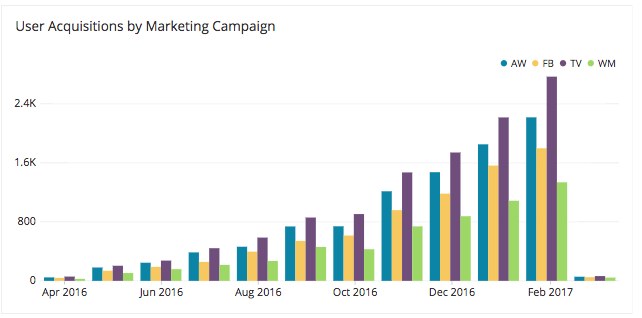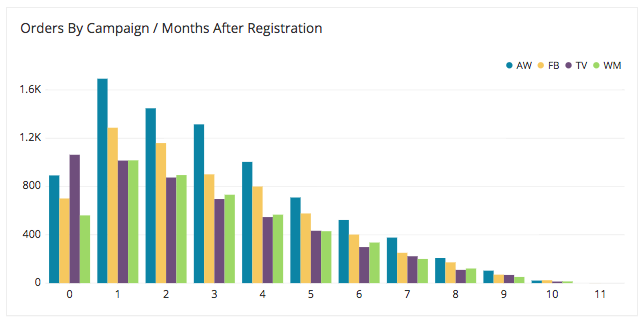Finding Marketing ROI Through Cohort Analysis
Posted by on July 20, 2017 Marketing, Marketing Analytics, Data Analytics
A cohort analysis is a method of analyzing data by comparing behavior or activity between different groups, or cohorts, of users. If you’re relatively new to the term cohort analysis, think of a cohort as a focus group that provides specific company insights.
While there are many ways to analyze your data to get insights, cohort analysis is a compelling way to aggregate and quantify user data. For example, looking at all product usage data is crucial in understanding daily active users, but cohort analysis provides a distilled view of a certain group of users.
As aforementioned, rather than analyzing all your behavioral data at once, a cohort analysis uses a segment of users and compares these different groups. Cohort analysis is useful for every department across your organization because it examines the cohort over a period of time and delivers unique insights.
According to the article, A Primer on Cohort Analysis by Khosla Ventures, “by tracking specific groups of users, otherwise known as cohorts, you can understand how users engage with your product in the days, weeks and months after you acquire them and, in turn, understand how resilient your growth is.”
Gearing Up for Cohort Analysis
Before venturing into the various types of cohort analyses, it’s important to take note of a few things first:
-
Determine what question you want to answer by performing a cohort analysis.
-
Determine the associated metrics that will help you answer the above question.
-
Clearly define your cohort (acquisition date, start of usage date, etc.). Having the right definition in place will provide the right insights.
-
Choose an analytics platform where you’ll perform your cohort analysis.
ROI and Cohort Analysis
According to Marketing Land, “in today’s highly competitive digital economy, the result that counts is revenue, and the only way to ensure your marketing team delivers that result is through data-driven marketing.”
As Marketing is expected to deliver higher returns and overcome their data paralysis, performing cohort analyses against marketing data is a crucial part of analytics. Fortunately for marketers, there are hundreds of different cohort analyses they can run and all of which will provide insights that will help them optimize campaigns and performance.
For our example, we’re going to look at user acquisitions by marketing campaign with MySQL as our database.

The above chart shows that our TV campaign is outperforming our three other campaigns and is generating the most net new users. While this visualization is useful, we can perform a cohort analysis that shows us user activity post-registration.

The above is our cohort analysis and visualizes how users are engaging with our site post-registration. We can then compare each cohort, or marketing campaign, by how active the users remain over time (in this case, over a 12-month period).
In reviewing the cohort analysis data, we can follow the activity of our TV users over 12 months and make decisions from there. Second, we’re also able to evaluate if the Cost of Acquiring a Customer (CAC) for this campaign is justified and if we should continue with the said campaign.
To learn how to perform this marketing cohort analysis, follow along with our data tutorial.
Cohort Analyses Across Your Organization
The benefits of cohort analysis extends beyond analyzing marketing data. Pulling data from your CRM can yield interesting analyses for the revenue teams in Sales and Customer Success.
For Sales, cohort analysis can comparatively measure individual sales representative performance, customer deal size patterns and trends with your data over a month, quarter, etc. Additionally, you can perform a cohort analysis to better understand your sales opportunities as they move through the sales process. By grouping specific opportunities into cohorts, you can track conversion, closed-won and closed-lost.
Cohort analysis can also be used to understand customer retention for SaaS-based businesses. In defining a cohort by the date they first subscribed (signed-up for an account), the rate of retention can then be plotted across a 12-month period.


